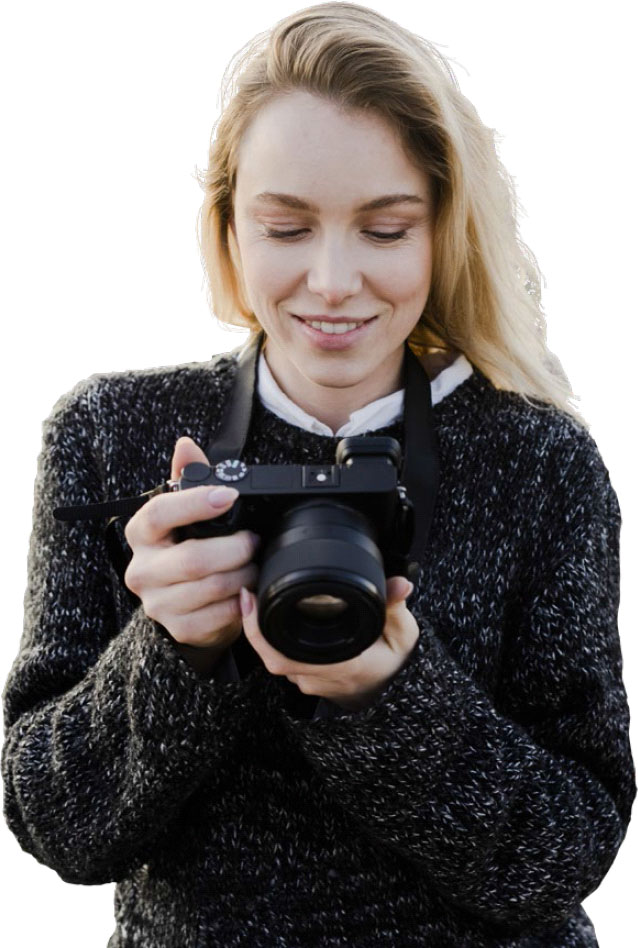WHY SHOOT WITH A CSC?
We break down exactly what makes a CSC different to a DSLR camera, and the compelling reasons to switch
They go by a number of different names - mirrorless, hybrid, MILC (mirrorless interchangeable-lens camera), even EVIL (electronic viewfinder interchangeable-lens) - but however you refer to them, CSCs (compact system cameras) all do the same thing: they offer the advantages of a digital SLR in a smaller, lighter format.
Those advantages include larger sensors than compacts (for the most part - see over the page), interchangeable lenses, the ability to use hotshoe flashguns and other accessories, and advanced controls. It’s the latter that helps to differentiate a CSC from a small SLR. Many camera manufacturers have compact DSLRs in their range, but these are invariably targeted at beginners. Pro compact system cameras, on the other hand, tend to offer more manual control over camera settings, as well as high-end features, such as faster continuous shooting, 4K video recording and weather-sealed bodies.
There’s a lot to be said for shaving weight from a camera kit. You’re more likely to take it with you for a start, meaning that you’ll be able to make the most of potential photo opportunities. Being more unobtrusive than a full-size DSLR - when they’re twinned with a suitable lens, at least - CSCs make excellent cameras for street photography, reportage and documentary work.
Panasonic kicked off the current CSC boom with the release of the Lumix G1 mirrorless camera in 2008, followed by Olympus with its Pen E-P1 in 2009. Both models were based around the Micro Four Thirds system, a standard that enables lenses from one manufacturer to be used on cameras from another. Since then, Nikon, Sony, Fujifilm, and Canon have also released flagship mirrorless cameras with continually advancing tech, prompting more and more photographers - pros and enthusiasts - to opt for a CSC over a bulkier DSLR.
We’re not suggesting that you rush out and exchange your DSLR immediately, but this feature we’ve put together a clear guide to the latest kit out there so that you can make an informed decision. Over the next few pages, discover the key features of CSCs, and insights from top pros on why they’ve made the switch.
ANATOMY OF A CSC
A compact system camera is similar to a DSLR, with some notable exceptions
Having no mirror means you have to use the Live View monitor or an electronic viewfinder
Size matters
Some compact system cameras may look like miniature DSLRs, but they don’t work in the same way.
The key difference is the CSC’s lack of a mirror assembly. Removing the mirror and pentaprism - the ‘reflex’ bit of single-lens reflex (SLR) - means that CSCs can be made slimmer than DSLRs.
This has an impact on the design of lenses, as the flange focal distance (FFD) - the measurement from the point where the lens is mounted to the imaging sensor - is shorter in a CSC than it is in a DSLR. The FFD is an important consideration, as a lens is calibrated to be sharply focused at this distance. This is why you can’t use a DSLR lens on a CSC - the point at which an object would appear sharply focused isn’t the same.
CSC SENSOR SIZING
Sensor size has implications for image quality, but bigger isn’t always better
Don’t be too swayed by the megapixel count when you go shopping for a CSC - you also need to take the size of the sensor into account. Generally speaking, larger sensors will produce cleaner images at high ISOs and make it easier to achieve shallow depth-of-field effects, while smaller sensors enable the design of smaller and lighter cameras and lenses.
DSLRs broadly fall into two camps - those with sensors with similar proportions to a frame of 35mm film (‘full frame’) and those with sensors closer to a frame of Advanced Photo System ‘Classic’ film (‘APS-C’). CSCs share these camps, while some also sit in the Micro Four Thirds camp.

© Gettyimages
Pros and cons of mirrorless